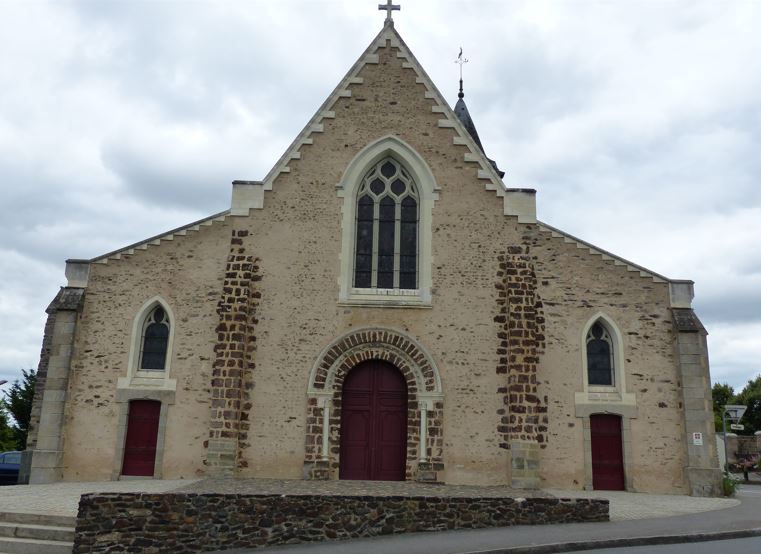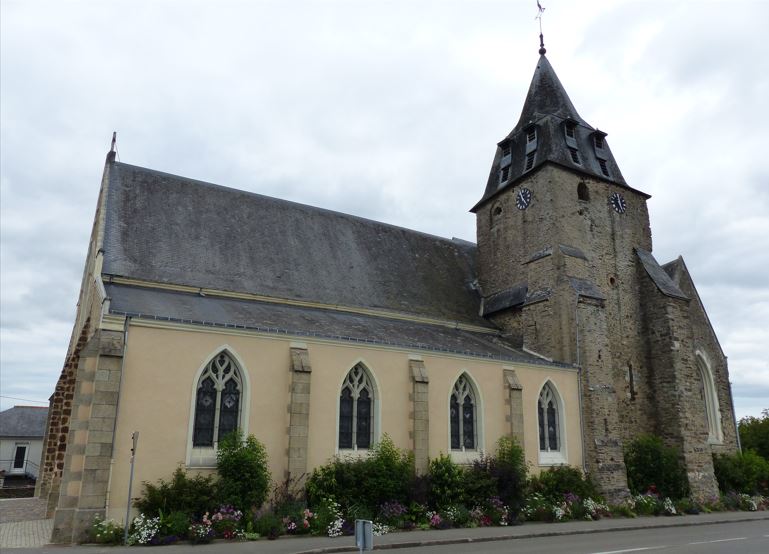L’église Saint-Martin de Bazouges, à Château-Gontier, se trouve sur le territoire d’un ancien château de Foulque Nerra, qui avait été échangé avec les religieux de Saint-Aubin contre Hondainville. Il reste des vestiges du XIe siècle dans le mur nord, en petit appareil régulier en feuilles de fougères, ainsi que deux petites baies murées. Reconstruite au XVe siècle (époque dont il reste la façade occidentale), le mur sud de la nef date du XVIe siècle. Un porche est construit en 1614, mais il est détruit aujourd’hui. La chapelle sud (trésorerie) a été édifiée par François Jourdin en 1647) et la sacristie en 1684, au même moment où le chevet a été repris. L’ensemble de l’église a été restauré au XIXe siècle, entraînant quelques modifications.
L’église abrite un vitrail montrant saint Martin tonsuré, nimbé, évoquant l’épisode de la messe miraculeuse, avec le globe de feu sur la tête et le pain et le vin dans les mains. Une statue figure saint Martin évêque.
The church of Saint-Martin de Bazouges, in Château-Gontier, stands on the site of a former castle belonging to Foulque Nerra, which was exchanged with the monks of Saint-Aubin for Hondainville. There are still remains of the 11th century in the north wall, in regular small fern-leaf stonework, as well as two small walled bays. The south wall of the nave dates from the 16th century and was rebuilt in the 15th century (of which the west façade remains). A porch was built in 1614, but has since been destroyed. The south chapel (treasury) was built by François Jourdin in 1647 and the sacristy in 1684, at the same time as the apse was rebuilt. The entire church was restored in the 19th century, resulting in a number of modifications.
The church has a stained glass window showing Saint Martin tonsured and nimbed, evoking the episode of the miraculous mass, with the globe of fire on his head and the bread and wine in his hands. There is also a statue of Saint Martin the bishop.




